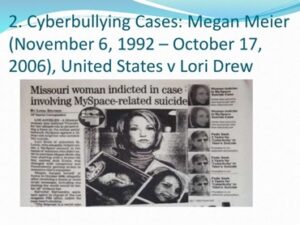WHO WILL POLICE THE METAVERSE?
Metaverse is the virtual world where people can socialise, work and play. It is a portmanteau of meta, meaning transcendent and verse, from the universe. Author Neal Stephenson coined the word “metaverse” in the 1992 science-fiction novel “Snow Crash,” to describe the virtual world in which the protagonist, Hiro, an utterly broke computer hacker and a pizza delivery driver with the crazy name Hiro in the real world, socialises, shops and vanquishes real-world enemies through his avatar in the metaverse to escape a dystopian reality.

Similarly, in 2018 Ready Player One, a dystopian American science fiction adventure film directed by Steven Spielberg based on Ernest Cline’s novel of the same name, also revolved around a metaverse called Oasis that users could access using VR headsets and wired gloves to escape from a world crumbling by an energy crisis.

Fast forward to today, and the metaverse is a hot buzzword in Silicon Valley that experts link to the development of Web 3.0. Web 3.0 is the latest version of the world wide web. Ethereum co-founder Gavin Wood coined Web 3.0 in the year 2014. `Web 3.0 takes the internet in its current form and adds blockchains to almost everything decentralising it in the process; hence it differs from Web 2.0, where a handful of big tech companies centralise data and content. The idea behind web 3 is to decentralise the internet and not have the heavyweights like Google, Twitter, and Facebook have all the power.

Today, we find many components of the metaverse already accessible within the contemporary internet-enabled video games. Second Life, available since 2003 with the user represented as an avatar, often gets referred to as Metaverse1. At Minecraft and Roblox, users build their metaverse and invite others to play. Roblox is estimated to have 5.5mn players compared with Second Life’s 90,000. In October of 2021, Zuckerberg rebranded Facebook as ‘Meta’, dubbing metaverse to be the next breakthrough in technology and a successor to mobile internet. Other corporations, such as Epic Games, Microsoft and even Nike, have announced plans to enter the metaverse in some form. Within 10 to 15 years, the experts predict metaverse to be $10 trillion to $30 trillion industry.

The development and spread of metaverses could lead to the emergence of new crimes, or it could lead to an increase in cybercrimes or give new dimensions to existing internet crimes. Metaverses are virtual towns or places where crime or criminal behaviour could be similar to real society. So all possibilities of crime that exist on the internet today could come to exist in the metaverse as it is part of the internet. Therefore, there is a likelihood of crimes occurring within the metaverse and the possibility of crimes of the virtual ecosystems spilling over to the real world. In the metaverse, the players or users buy goods for their avatars, such as clothes and shoes to adorn them or buy weapons such as guns and swords for their self-defence. Users purchase such properties using a currency that is acceptable in the metaverse. Wherever and whenever objects or property of value exist, potential crooks are always waiting to steal them. Suppose the shoes brought in the virtual world have gotten stolen; that shoe is a virtual object and not an actual physical thing which cannot fit into the definition of the offence of theft. Hence, the metaverse could throw up new forms of criminal behaviour.

Further, economic activity due to numerous business opportunities and the availability of several means of disguising illicit money would make metaverse a fertile breeding ground for money laundering, especially where users can swap cyber currency for real cash. In the metaverse anti-money laundering (AML), Know your customer (KYC) protections will be as important as they are in the real world. If we imagine the gamut of goods and services in the metaverse and the businesses making real money, that will move them back and forth from the metaverse to the real world and vice versa. Keeping track of all that money from going untraceable will be a big challenge.

Consider a situation where the avatar is abused and threatened. Who deserves the punishment in such a situation? If we decide to punish the avatar, we would have to send him to a virtual prison? But the avatar will not feel the punishment’s pinch as it’s a virtual object and if we decide to punish the user. That would mean punishing the user for sitting in front of the computer. So most of the criminal offences in the world, such as theft, robbery, damage to property, arson, rape, bodily injury or homicide that take place in the virtual world we would have to reduce it to a computer offence such as computer fraud, modification of data, or computer sabotage.

For instance, the 13-year-old Megan Meier committed suicide in October 2006 after being abandoned by her fictitious Internet love, “Josh Evans”, created by a former schoolmate and her mother in the Internet chat room “MySpace”. The mythical internet love succeeded in charming Megan ultimately. But to humiliate her, Josh one day ditched Megan, heaping vicious insults on her. Not able to cope with the breakup, Megan hung and killed herself that afternoon. For the offence, the schoolmate’s mother was sentenced to computer fraud by an American Federal Court because she had logged herself in at “MySpace” with a false name.

 Finally, Hal Lonas, CTO of Trulioo, believes that to counter the potential threats of the metaverse, we will need a virtual version of INTERPOL to police it for fraud and financial crimes. Second Life, which has existed since 2003, apparently stays away from regulating the avatars. Hence, we may have to bring the metaverses under the purview of the real world’s national or international legal systems. Given the potential for cross-border payments of various sizes through the metaverse, we may need international agreements on what can go on and what cannot.
Finally, Hal Lonas, CTO of Trulioo, believes that to counter the potential threats of the metaverse, we will need a virtual version of INTERPOL to police it for fraud and financial crimes. Second Life, which has existed since 2003, apparently stays away from regulating the avatars. Hence, we may have to bring the metaverses under the purview of the real world’s national or international legal systems. Given the potential for cross-border payments of various sizes through the metaverse, we may need international agreements on what can go on and what cannot.
Source from: epaper/dtnext/chennai/dt:09.01.2022
 Dr.K. Jayanth Murali is an IPS Officer belonging to 1991 batch. He is borne on Tamil Nadu cadre. He lives with his family in Chennai, India. He is currently serving the Government of Tamil Nadu as Additional Director General of Police, Idol Wing CID.
Dr.K. Jayanth Murali is an IPS Officer belonging to 1991 batch. He is borne on Tamil Nadu cadre. He lives with his family in Chennai, India. He is currently serving the Government of Tamil Nadu as Additional Director General of Police, Idol Wing CID.
